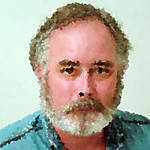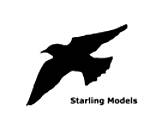Early Aviation
Discuss World War I and the early years of aviation thru 1934.
Discuss World War I and the early years of aviation thru 1934.
Hosted by Jim Starkweather
stretch sprue rig question
JimMrr

Joined: January 03, 2007
KitMaker: 1,505 posts
AeroScale: 595 posts

Posted: Tuesday, October 06, 2009 - 02:01 AM UTC
Hi guys...while ive built a number of biplanes,this is the first time Ive tried stretch sprue rigging. Im being very careful to measure correctly for a good fit on the sprue,but a couple of them have developed a slight sag after fixing with liquid cement. What would be the proper way to induce tightness in the line. Ive heard in the past mention of using a burned out match head ....can someone outline the process please?

JackFlash

Joined: January 25, 2004
KitMaker: 11,669 posts
AeroScale: 11,011 posts

Posted: Tuesday, October 06, 2009 - 05:34 AM UTC
It can be a bit "tense". . . you can try incense punks (the type on sticks. or a burned out match. but try this on some spare material to get the hang of it. Usually a quick pass will tighten up stretched sprue. Don't get too close or leave the heat source too long. A burned out match will by nature loose its heat very quickly. You might get by with using a hairdryer. But this could effect all of your lines.
JimMrr

Joined: January 03, 2007
KitMaker: 1,505 posts
AeroScale: 595 posts

Posted: Tuesday, October 06, 2009 - 10:03 AM UTC


Thanks Stephen...
blancodrover

Joined: October 06, 2009
KitMaker: 2 posts
AeroScale: 1 posts

Posted: Tuesday, October 06, 2009 - 10:57 AM UTC
Jim,
I've been rigging with sprue for the past 40 years or so and choose it over the other available mediums for 1/48th and 1/72nd scale. A couple of tips that might help you:
Attach your rigging with white glue such as Elmer's or Tacky. That'll make life a lot easier when you have to replace or repair rigging; just pull off the offending piece of rigging, flick away the tiny spot of dried white glue with the tip of your knife blade, and re-rig!
Tension the rigging with a fine soldering iron tip. It's easy to manipulate, easy to control, and gives a highly localized heat source. Just don't touch the model with it! To do the actual tensioning, make certain the white glue has completely dried (usually 15 minutes or so), then pass the tip of the iron to within a half-inch or so of the line being tightened. Said line will sag a bit, then tighten right up and stay that way.
This method will remove some of the heartache from rigging with sprue since the lines don't have to be tight when you install them---you can go back after the model is rigged and selectively tighten up whatever you need to.
Hope this technique is of help.
Phillip Friddell
Replica in Scale
I've been rigging with sprue for the past 40 years or so and choose it over the other available mediums for 1/48th and 1/72nd scale. A couple of tips that might help you:
Attach your rigging with white glue such as Elmer's or Tacky. That'll make life a lot easier when you have to replace or repair rigging; just pull off the offending piece of rigging, flick away the tiny spot of dried white glue with the tip of your knife blade, and re-rig!
Tension the rigging with a fine soldering iron tip. It's easy to manipulate, easy to control, and gives a highly localized heat source. Just don't touch the model with it! To do the actual tensioning, make certain the white glue has completely dried (usually 15 minutes or so), then pass the tip of the iron to within a half-inch or so of the line being tightened. Said line will sag a bit, then tighten right up and stay that way.
This method will remove some of the heartache from rigging with sprue since the lines don't have to be tight when you install them---you can go back after the model is rigged and selectively tighten up whatever you need to.
Hope this technique is of help.
Phillip Friddell
Replica in Scale

JackFlash

Joined: January 25, 2004
KitMaker: 11,669 posts
AeroScale: 11,011 posts

Posted: Tuesday, October 06, 2009 - 01:22 PM UTC
Love the work!
Quoted Text


Thanks Stephen...
BradCancian

Joined: August 30, 2006
KitMaker: 285 posts
AeroScale: 281 posts

Posted: Tuesday, October 06, 2009 - 04:12 PM UTC
Another option is to heat up an old hobby knife blade (handle on, of course!) and use that as your heat source (saves you buying a soldering iron). I did this on the one model I have rigged with stretched sprue and it gave me good control, as you can use the flat side of the hobby knife to transfer heat more evenly over the line.
:-)
BC
:-)
BC

BurlBurlingame

Joined: October 01, 2009
KitMaker: 53 posts
AeroScale: 52 posts

Posted: Tuesday, October 06, 2009 - 05:04 PM UTC
If you use an intense heat source, like a soldering iron, be advised that the rigging will momentarily stretch and sag, before it contracts. It can be surprising.
Depending on how thin your sprue is, you can also use cigarette smoke. Light the cigarette in a room with no ventilation (gaaaah!) and let the smoke drift up through the wires. I have a 30-year-old pack of Kools in my toolbox just for this.
Depending on how thin your sprue is, you can also use cigarette smoke. Light the cigarette in a room with no ventilation (gaaaah!) and let the smoke drift up through the wires. I have a 30-year-old pack of Kools in my toolbox just for this.
thegirl

Joined: January 19, 2008
KitMaker: 6,743 posts
AeroScale: 6,151 posts

Posted: Tuesday, October 06, 2009 - 06:05 PM UTC
Hello Jim  May not be as good as some of the other tips, which are all really good . Never thought of using a hair dryer before . I have used a sewing needle heated up under a candle flame until glowing red following the methods already said .
May not be as good as some of the other tips, which are all really good . Never thought of using a hair dryer before . I have used a sewing needle heated up under a candle flame until glowing red following the methods already said .
 May not be as good as some of the other tips, which are all really good . Never thought of using a hair dryer before . I have used a sewing needle heated up under a candle flame until glowing red following the methods already said .
May not be as good as some of the other tips, which are all really good . Never thought of using a hair dryer before . I have used a sewing needle heated up under a candle flame until glowing red following the methods already said . Posted: Tuesday, October 06, 2009 - 07:39 PM UTC
Hi there
I use a sewing pin tapped into a half an old wooden clothes peg (as a handle). The same as with Terri's needle version, I hold the pin over a candle flame until it's red hot, let it cool momentarily and then tighten the rigging. The beauty of a pin or needle is that you can get it in among several crossing wires wthout much fear of damaging anything.
All the best
Rowan
I use a sewing pin tapped into a half an old wooden clothes peg (as a handle). The same as with Terri's needle version, I hold the pin over a candle flame until it's red hot, let it cool momentarily and then tighten the rigging. The beauty of a pin or needle is that you can get it in among several crossing wires wthout much fear of damaging anything.
All the best
Rowan

JimMrr

Joined: January 03, 2007
KitMaker: 1,505 posts
AeroScale: 595 posts

Posted: Wednesday, October 07, 2009 - 12:01 AM UTC
many many thanks for all of your advice,guys and Terri!.and thanks for the Kudos Stephen!..To ensure I understand the process correctly: If I use a red hot pin on a stick I place it close to the line to be tightened,and expect a momentary sag,followed by the tightening ....correct?...im under a tight deadline on this one to get her finished!..I'll be rigging my brainss out in the next few days..Lucky this isnt an Fe2b( thats waht I WANT for my next WNW kit!...LOVE that plane..!)

MikeM

Joined: December 31, 2004
KitMaker: 219 posts
AeroScale: 28 posts

Posted: Thursday, October 08, 2009 - 10:43 AM UTC
Jim
I build a lot of model ships in small scale and exclusively use stretched sprue. There is a good description of the techniques I and a number of other ship modellers use on www.finewaterline.com go to the tips and tricks section and have a look at the how to stretch sprue and the rigging sections. Although about ships the techniques apply, I have also used it on a couple of biplanes as I have only very recently extended my usual sphere of interest into WW1 aircraft, but it worked fine. I would really recommend the incense stick method, far more control than anything else and as you will see from the photos on the site, if it works for ships, then it will work for aircraft.
Mike
I build a lot of model ships in small scale and exclusively use stretched sprue. There is a good description of the techniques I and a number of other ship modellers use on www.finewaterline.com go to the tips and tricks section and have a look at the how to stretch sprue and the rigging sections. Although about ships the techniques apply, I have also used it on a couple of biplanes as I have only very recently extended my usual sphere of interest into WW1 aircraft, but it worked fine. I would really recommend the incense stick method, far more control than anything else and as you will see from the photos on the site, if it works for ships, then it will work for aircraft.
Mike
JimMrr

Joined: January 03, 2007
KitMaker: 1,505 posts
AeroScale: 595 posts

Posted: Sunday, October 11, 2009 - 11:39 PM UTC
Thank you Mike for the reference. I have recently moved to "the dark side" and completed a pre-drednaught Russian Imperial battleship, from 1908 I believe, using WEM lycra thread for rigging...THAT was um...interesting ...but it looks GREAT!! I will look very closely at this site you recommend as I see crossover applications here fer sher.....

MikeM

Joined: December 31, 2004
KitMaker: 219 posts
AeroScale: 28 posts

Posted: Monday, October 12, 2009 - 11:24 AM UTC
Jim
Yes I think there is cross over, although I'm crossing the other way!
You did well with the wem lycra, I had some but it just turned into a ball of fuzz.
Mike
Yes I think there is cross over, although I'm crossing the other way!
You did well with the wem lycra, I had some but it just turned into a ball of fuzz.
Mike
JimMrr

Joined: January 03, 2007
KitMaker: 1,505 posts
AeroScale: 595 posts

Posted: Tuesday, October 20, 2009 - 12:38 PM UTC
I wanted to thank everyone for your advice, was just what the doctor ordered and the project finalized with a flourish!. I feel the SE5a is the best Ive done yet ...thanks! ..
 |














